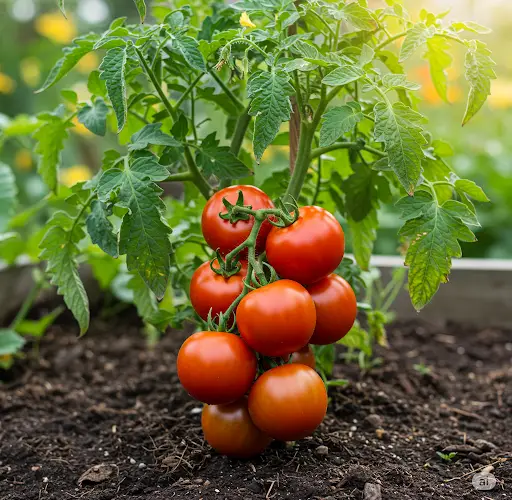Tomatoes are one of the most popular and rewarding crops for home gardeners, but they can also be surprisingly finicky. Whether you’re growing in containers, raised beds, or open ground, there’s one key practice you can do right now that can double your yield and dramatically improve the quality of your harvest.
Many gardeners don’t realize that early and mid-season tomato care plays a vital role in how many fruits they get — and how large and sweet those tomatoes will be. Here’s what you should be doing with your tomatoes now to ensure they produce to their full potential.
Step 1: Remove Lower Leaves and Early Suckers
Tomatoes are vigorous growers and will often develop excess foliage, especially near the base of the plant. While this growth may seem harmless, it can actually block airflow, attract pests, and divert energy away from fruit development.
Here’s what to do:
-
Remove the lower 3–4 leaves from the bottom of each plant, especially if they are touching the soil. These are the most prone to fungal diseases and do little to support the plant once it’s established.
-
Pinch off side shoots (suckers) that appear in the joint between the main stem and branches. This encourages the plant to direct more energy to fruit rather than extra greenery.
By doing this, you increase air circulation, reduce the risk of blight, and focus the plant’s energy where it counts — on producing fruit.
Step 2: Feed with a Mid-Season Nutrient Boost
Once your tomato plants are about 30–40 cm (12–16 inches) tall and starting to flower, they need a different nutritional balance than they did during seedling growth. At this stage, tomatoes crave potassium and phosphorus, which support flowering and fruit development.
Here’s a powerful, natural feeding solution to apply now:
Ingredients:
-
1 tablespoon of wood ash (high in potassium)
-
1 tablespoon of bone meal or powdered eggshells (rich in phosphorus and calcium)
-
1 liter (1 quart) of water
Mix the ingredients well and let sit for at least an hour. Pour the mixture directly at the base of each plant, avoiding contact with leaves.
Why it works:
-
Potassium supports flowering and fruit set
-
Phosphorus strengthens roots and enhances bloom quality
-
Calcium prevents blossom end rot, a common tomato issue
Repeat this feeding every 10–14 days throughout the flowering and fruiting stages.
Step 3: Gently Shake the Plants
Tomatoes are self-pollinating, but they often need a bit of help to move pollen from the male to the female parts of the flower. Outdoors, wind and pollinators do some of this naturally, but giving your plants a little boost can increase fruit set significantly.
Here’s how:
-
Once flowers are fully open, gently shake the main stem or flower clusters in the early morning when humidity is higher.
-
You can also tap the flowers or use an electric toothbrush near the flower stem to simulate bee vibration.
This small act encourages more successful pollination — and more fruit per plant.
Step 4: Mulch and Maintain Consistent Moisture
Tomatoes don’t like extremes — especially when it comes to watering. Inconsistent watering (dry spells followed by heavy soaking) is the #1 cause of fruit cracking and blossom end rot.
To avoid this:
-
Mulch around your plants with straw, shredded leaves, or grass clippings to retain soil moisture and regulate temperature.
-
Water deeply and consistently, keeping the soil evenly moist but not soggy.
A consistent watering routine reduces plant stress and supports steady fruit development.
Step 5: Train and Tie for Better Airflow
Letting tomato plants sprawl can crowd the garden and create damp, dark conditions that invite disease. Instead, train your tomato plants vertically:
-
Use stakes, cages, or trellises to keep the main stem upright.
-
Tie branches loosely with soft twine or strips of cloth, avoiding constriction.
This exposes more leaves and fruit to sunlight, improves airflow, and makes harvesting easier — all of which support a healthier, more productive plant.
Results to Expect
By applying this combination of care techniques right now, you can expect:
-
More flower clusters per plant
-
Higher fruit set
-
Larger and sweeter tomatoes
-
Fewer disease issues like blight and rot
-
Longer harvest window
These small but powerful interventions redirect your tomato plant’s energy from excessive foliage to producing bigger, better fruit.
Final Thoughts
Doubling your tomato harvest isn’t about working harder — it’s about working smarter. A few timely practices like pruning, feeding, pollination support, and proper watering can dramatically increase your yield.
Don’t wait for problems to appear or for your tomatoes to underperform. By acting now, while your plants are still developing, you give them the best chance to produce an abundant crop of delicious tomatoes you’ll enjoy all season long.



